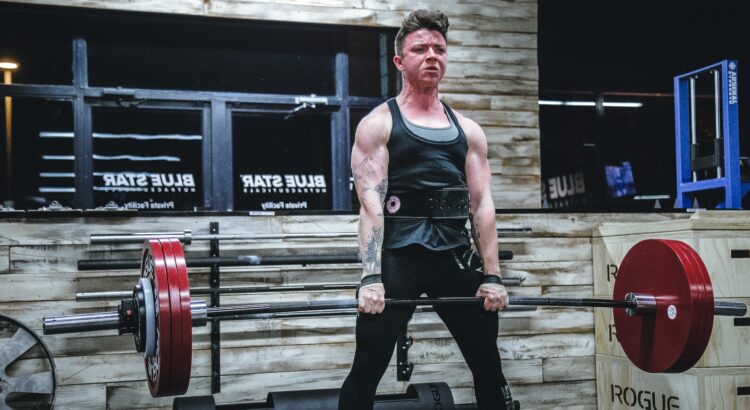Table of Contents
1. Introduction: What is the Romanian Deadlift?
The Romanian deadlift, also known as the RDL, is a strength training exercise that primarily targets the posterior chain muscles, including the hamstrings, glutes, and lower back. It is often performed with a barbell or dumbbell and involves hinging at the hips while maintaining a neutral spine.
Unlike the conventional deadlift where the barbell starts from the ground, the Romanian deadlift begins with the barbell at thigh level. This exercise places greater emphasis on the eccentric (lowering) phase, making it an excellent choice for building muscle strength and improving hip mobility.
2. Benefits of the Romanian Deadlift
Incorporating Romanian deadlifts into your workout routine offers a range of benefits, including:
a. Increased Hamstring and Glute Strength: The Romanian deadlift specifically targets the hamstrings and glutes, helping to strengthen and tone these muscle groups for improved athletic performance and functional movement.
b. Improved Hip Mobility: The hip hinge motion performed during the Romanian deadlift enhances hip flexibility and mobility, which can contribute to better posture and reduced risk of lower back pain.
c. Enhanced Posterior Chain Development: The exercise engages the entire posterior chain, including the hamstrings, glutes, lower back, and even the upper back muscles, leading to improved muscle balance and overall strength.
d. Core Stability and Spinal Health: Maintaining a neutral spine throughout the movement promotes core stability and protects the lower back from potential injuries.
e. Functional Strength Transfer: The Romanian deadlift mimics movements used in various sports and, daily activities, such as bending, lifting, and reaching. By strengthening these movement patterns, you can enhance your overall functional strength.
3. How to Perform the Romanian Deadlift
To perform the Romanian deadlift correctly, follow these step-by-step instructions:
Step 1: Proper Setup and Grip
- Stand with your feet shoulder-width apart and the barbell resting on the top of your thighs.
- Maintain a slight bend in your knees and a neutral spine.
- Grasp the barbell with an overhand grip, slightly wider than shoulder-width apart.
Step 2: Maintaining a Neutral Spine
- Engage your core and keep your back flat throughout the movement.
- Begin to hinge at the hips by pushing your glutes back while maintaining a slight bend in your knees.
- Lower the barbell towards the floor, ensuring it stays close to your body.
Step 3: Initiate the Movement
- As you lower the barbell, focus on feeling a stretch in your hamstrings.
- Once you reach a comfortable position where you feel a good stretch, pause for a moment.
Step 4: Maintain Control and Balance
- Push through your heels and engage your glutes to reverse the movement.
- Extend your hips forward, bringing your torso back to an upright position.
- Squeeze your glutes at the top of the movement and maintain control throughout.
Repeat the above steps for the desired number of repetitions.
4. Common Mistakes to Avoid
To get the most out of your Romanian deadlifts and minimize the risk of injury, avoid these common mistakes:
- Rounding the Back: Maintaining a neutral spine is crucial to protect your lower back. Avoid rounding or excessively arching your back during the exercise.
- Using Excessive Weight: Start with lighter weights to focus on proper form and technique. Gradually increase the weight as your strength and proficiency improve.
- Not Engaging the Core: Neglecting to engage your core muscles can compromise your stability and increase the risk of injury. Ensure your core is actively involved throughout the movement.
- Hyperextending at the Top: While it’s essential to squeeze your glutes at the top of the movement, avoid overextending your lower back, as this can strain the lumbar spine.
5. Variations of the Romanian Deadlift
The Romanian deadlift can be modified to suit different fitness levels and goals. Here are a few variations you can incorporate into your training:
Single-Leg Romanian Deadlift
This variation helps improve balance and targets each leg individually. Stand on one leg while performing the Romanian deadlift motion with a dumbbell or kettlebell in the opposite hand.
Sumo Romanian Deadlift
The sumo Romanian deadlift involves taking a wider stance with your feet, pointing your toes outward. This variation places additional emphasis on the inner thigh muscles (adductors) while targeting the same posterior chain muscles.
Dumbbell Romanian Deadlift
Instead of using a barbell, you can perform the Romanian deadlift with dumbbells. This variation allows for greater range of motion and provides an excellent alternative when barbells are not available.
6. Integrating the Romanian Deadlift into Your Workout Routine
To maximize the benefits of the Romanian deadlift, consider incorporating it into your lower body or full-body workout routine. Aim for 2-3 sets of 8-12 repetitions, focusing on maintaining proper form and gradually increasing the weight over time.
7. Safety Tips and Precautions
While the Romanian deadlift is generally safe for most individuals, it’s essential to keep the following safety tips in mind:
- Warm up adequately before performing any exercise to prepare your muscles and joints.
- Start with lighter weights and focus on mastering the technique before progressing to heavier loads.
- If you have any pre-existing back or hip conditions, consult with a healthcare professional or a qualified trainer before attempting the Romanian deadlift.
